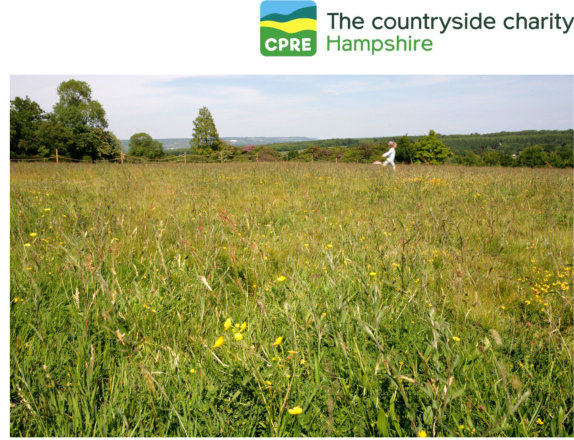 CPRE Hampshire, the countryside charity announces the findings of a major piece of independent research it commissioned last year to explore the value of the countryside in South Hampshire.
CPRE Hampshire, the countryside charity announces the findings of a major piece of independent research it commissioned last year to explore the value of the countryside in South Hampshire.
The report focuses on the potential benefits to health and wellbeing, the economy, and the value of nature and ecosystems. ‘Introducing a South Hampshire Green Belt: exploring the socioeconomic and environmental value’ by NEF Consulting, part of UK think tank the New Economics Foundation, is based on the large body of evidence from UK and international research.
CPRE Hampshire is campaigning for a new Green Belt to prevent urban sprawl north of the built-up areas of South Hampshire.
Dee Haas, Chair of CPRE Hampshire said: ‘A South Hampshire Green Belt is part of our strategic vision for the county. We want to make sure that South Hampshire has a countryside next door for current and future generations.
A Green Belt would provide vital access to the countryside for people living in the larger towns and cities of Eastleigh, Fareham, Portsmouth, Romsey, Southampton and Winchester, and restrict the further sprawl and merging of these urban areas.
During the coronavirus lockdown, there’s been a surge of appreciation for the countryside and an awareness of the role that green spaces and nature play in our wellbeing. We’re realising the value of the countryside nearest to our homes. This value can be expressed in different ways.’
The research finds that the countryside north of the urban centres of South Hampshire could generate almost £26 million a year in health, wellbeing, economic and ecosystem benefits if protected by a Green Belt:
- The health and wellbeing benefit for people living in and around this area of countryside could amount to up to £17 million a year. This value relates to the potential loss of wellbeing if the proposed Green Belt area was built on.
- The potential impact of building across the proposed Green Belt area may cost the NHS up to £690,000 in increased GP visits a year.
- The value of ecosystem services provided by the proposed Green Belt area for food, removal of air and carbon pollution, flood protection and biodiversity are estimated at £7.6 million a year. These are important aspects in tackling the climate emergency.
- The potential economic benefit from tourism and recreation in the proposed Green Belt area is estimated as much as £1.3 million a year
- Looking ahead over two generations or the next 60 years, if Net Present Value (NPV) is applied to the annual figures, this could produce well in excess of half a billion pounds (£0.5 billion) in health, wellbeing, economic and ecosystem benefits
- Up to £452 million in health and wellbeing benefits for people living in and around the proposed Green Belt
- £192 million from ecosystem services provided by the proposed Green Belt area
- £35 million in economic benefits from tourism and recreation activity in the proposed Green Belt area.
NEF Consulting’s analysis is based on the large body of evidence from UK and international research studies on the physical and mental health benefits of green and open spaces – benefits that are being highlighted even more to all of us during the coronavirus pandemic.
Dee Haas added: ‘We want our decision-makers to make sure that the value of our countryside, as set out in this report, is retained by the protection of a Green Belt – the only effective legislation currently available to prevent urban sprawl.
The report findings are relevant to any area of countryside or green space. As well as highlighting the huge value that our countryside and green spaces bring, they show what is lost – personally, socially, economically and environmentally - if they’re built on.
It’s important that these values are considered by our planning authorities when deciding on the location of development - we want to see a genuine ‘brownfield first’ approach. Furthermore, there may be potential for reconsidering the uses in town and city centres, in the light of high street decline.’
To find out more and to read NEF Consulting’s report visit: www.cprehampshire.org.uk